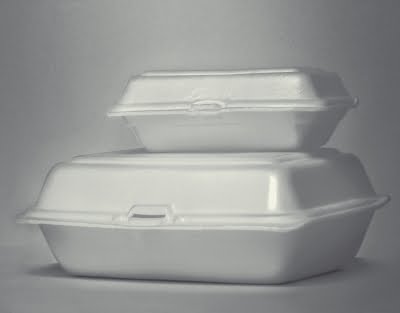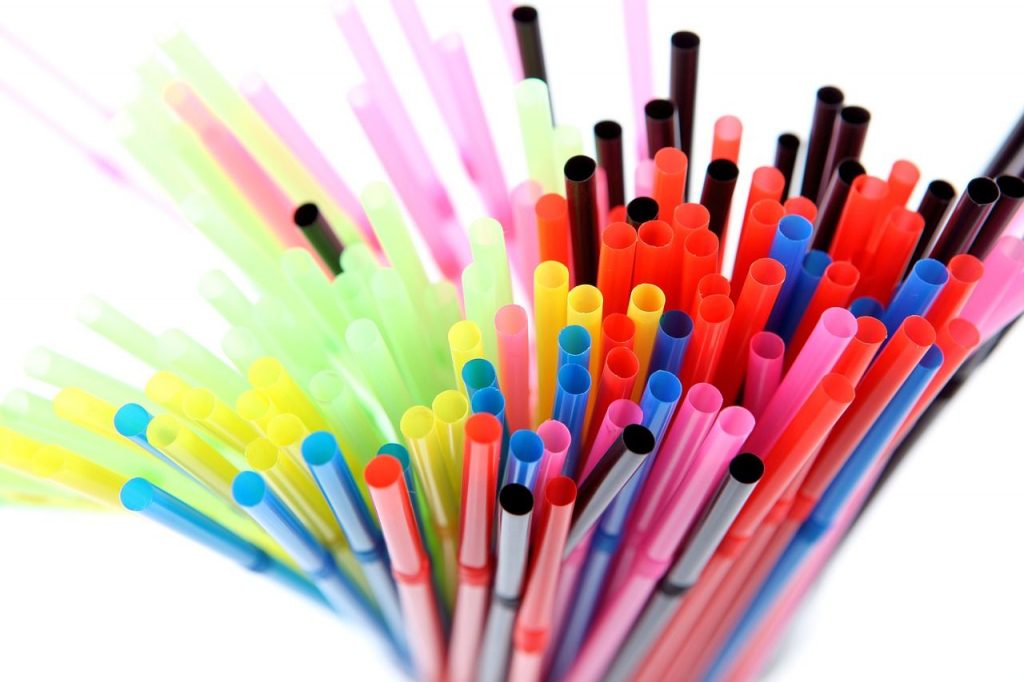By David Guion
Recycling greatly helps the environment, and in principle, everything is recyclable. However, some things should never go into your curb recycling bin.
Most communities offer “single stream” recycling, which means that we put everything in one container. From there it goes to a materials recovery facility (MRF), otherwise known as a recycling centre, for sorting. The wrong materials in our recycling bins present a danger to both the equipment and the people who work with it.
Furthermore, recycling wrong for decades has thrown the recycling industry into a crisis. China used to buy up all the world’s recycling. Then it discovered that up to a quarter of what it bought was trash fit only for their landfills.
After years of warnings, China cracked down. It finally declared that it would no longer be the world’s dumping ground. It insisted on an almost ridiculously low contamination rate for the most valuable recyclables. And it stopped accepting low-grade plastic and paper entirely.
Why can’t materials recovery facilities (MRFs) just find other buyers?
For one thing, other potential Asian markets likewise became pickier about what to accept. Plus, they didn’t pay as much as China did. For another, when China was buying, it priced American recycling processors out of the market. Sooner or later, a critical mass of American companies will buy as much post-consumer waste as MRFs can produce. It will take years. And they won’t welcome junk any more than China does.
Therefore, it’s past time for Americans (and people in other affected countries) to learn to recycle properly. Here are some common items that aren’t recyclable in your curbside recycling bin.
This post is based on my observations from touring four different MRFs. Now let’s get started!
“Tanglers”, including plastic bags and plastic straws
“Tanglers” are flexible, small, and/or thin items that get stuck in the conveyor belts and equipment of recycling facilities. These items are NOT recyclable.
Why?
Recycling facilities are assembly lines that use conveyor belts and rotating equipment. Plastic bags and other “tanglers” get stuck in the rotators and conveyor belts.

When one part of the plant shuts down to clean tanglers out of machinery, the whole recycling operation must shut down. It can happen an average of 8-10 times per day because of entanglements, and most of those have to do with plastic bags.
As a general rule-of-thumb, don’t put anything smaller than a credit card into your recycling bin.
Common “tanglers” include:
- Plastic Bags
- Coat hangers
- Plastic straws
- Hoses
- Cords
- Charging cables
- Any other kind of wire or small and flexible materials
Most of the time it’s the plastic bags that shut down recycling machinery, but the other tanglers in the list generally cause more damage than plastic bags.
However, on one MRF tour the guide showed me a picture of a very expensive component of a MRF destroyed by a plastic bag. So don’t put individual plastic bags into your curbside recycling bin either!
To recycle plastic bags, take them to grocery stores or other retail outlets that have collection bins for them.
Now, there are some curbside recycling programs that will accept plastic bags (like the curbside pickup program in the City of Toronto, Canada). However, even in these cases plastic bags are sorted out of normal recycling by hand to be processed in a specialized facility.
Scrap metal
Scrap metal is not only recyclable but very valuable. But, don’t put it out at the curb! MRF equipment can’t handle it.
The education director at one plant told me, “We have literally seen plumbing piping, huge plumbing pipe. One piece actually fell off of the line and injured someone. So this is the kind of stuff that if you put it in your recycling, it is endangering someone’s livelihood.”
Local companies buy scrap metal. The web search “scrap metal near me” will identify them, and you can receive cash for your scrap metal. Don’t put scrap metal in your curbside recycling bin.
Styrofoam™ (Polystyrene)

In general, styrofoam is not recyclable. Whereas scrap metal is too heavy for the equipment, Styrofoam is too light. It’s 5% polystyrene and 95% air. It breaks up into tiny pieces and gets all over everything else. Whatever doesn’t belong in a bale is a contaminant. Companies that purchase sorted bales will return them and demand a refund if they contain too much contamination.
Machines exist to remove the air from Styrofoam and make it into a suitable raw material for new products. They are owned only by companies that specialize in processing Styrofoam.
How can you get your Styrofoam to one of them?
Some city curbside collection programs (like in the City of Toronto) will accept styrofoam in their “single-stream” recycling bins. In these cases, the city or MRF will sort out the styrofoam and ship it to a specialized styrofoam recycler. However, most cities do NOT accept styrofoam, so you should do a Google search to check for your own local municipality or garbage collection service.
The search “Styrofoam recycling near me” will also show drop-off centers that accept styrofoam. If there are none nearby, further investigation will show you where you can ship it. In that case, you will have to do a cost-benefit analysis to make sure the environmental cost of recycling it doesn’t outweigh the cost of sending it to the landfill.
Related Post: 30 Ways to Reuse Styrofoam (With How-To Details and Instructions!)
If you can’t find a local place to recycle Styrofoam, then try to avoid taking any home in the first place. That may affect your choice of where to buy take-out food or drinks or what brands to buy at stores.
Needles
Some people apparently think needles are recyclable.
Syringes and needles are actually medical waste. Someone’s hands potentially touch anything that comes through the facility. Their gloves do not adequately protect against sharp objects.
Medical facilities are required by law to incinerate medical waste. Individuals can’t follow the same procedures as hospitals or doctors’ offices. If you need to use needles at home, put them in a plastic bottle. Then take the bottle, with its cap, to your doctor’s office for incineration. Or your needles may come with a suitable receptacle.
If you need to give shots to a pet, return those needles to your vet’s office.
Sewing needles––and pins––will fall through the system. They will eventually be included in the trash the MRF has to pay to take to the landfill. So under this heading, don’t put anything smaller than a credit card in your recycling.
Hazardous wastes
Household hazardous waste processing centers take non-medical materials and may also take miscellaneous items such as CD-ROMs and small appliances. These items do NOT belong in your curb recycling bin..
Here are some common examples of household hazardous wastes. They don’t belong either in your recycling or your trash.
- Harsh cleaning products such as drain cleaners or oven cleaners
- Pesticides and herbicides, including ant and rodent killers
- Automotive products such as motor oil or antifreeze
- Oil-based paints
- Fluorescent lights and ballasts—both tube and CFLs
- Consumer electronics such as televisions, cell phones, or computer equipment
- Dead batteries

Trash
It’s amazing how careless some people can be. I saw a pile of glass ready to be shipped away from a MRF. It didn’t look like a glass pile. I saw potatoes and other food waste, bits of plastic and paper too small to go through the system, and all kinds of other light stuff that made its way to the top of the pile. The glass sank to the bottom, nearly out of site.
Besides food waste, MRFs have reported other household trash. And, would you believe it, dirty diapers! I
Don’t put obvious trash into the recycling bin. This means no food waste and no small bits of paper, plastic, or glass!
Local requirements may vary
Single stream recycling programs all generally accept the same kinds of items, and the same kinds of items detailed in this post are unsuitable for all of them. Study other articles on the web about how to recycle. And to find how to recycle what you can’t put out at the curb, check Earth911.com.
Programs differ from town to town in detail. A web search will tell what recycling your community accepts at the curb and what needs to be taken somewhere else or just put in the trash.
Whatever you can put in recycling, make sure it’s reasonably clean. Make sure nothing can come out of any can, bottle, or jar to ruin otherwise valuable paper. Shake the last few drops of your drink from aluminum cans.
Some places offer drop-off centers where consumers sort their recyclables into separate bins. Source separation results in a cleaner product for the MRF. It is much safer for their staff to work with. If you have opportunity to use such a service, take advantage of it. We have become used to making decisions based on convenience. And it’s that insistence on convenience that has led to our current recycling crisis.
About the Author: David Guion
David Guion served for three years on a university sustainability committee and has written extensively about sustainability. He publishes the respected blog Sustaining Our World and the new website Sustainability Scout.
Edited By Hugh


![How much Water does it take to make your Breakfast, Lunch and Dinner? [Infographic]](https://get-green-now.com/wp-content/uploads/2017/05/Water-Footprint-Of-Food-Header-Cropped-768x431.png)




